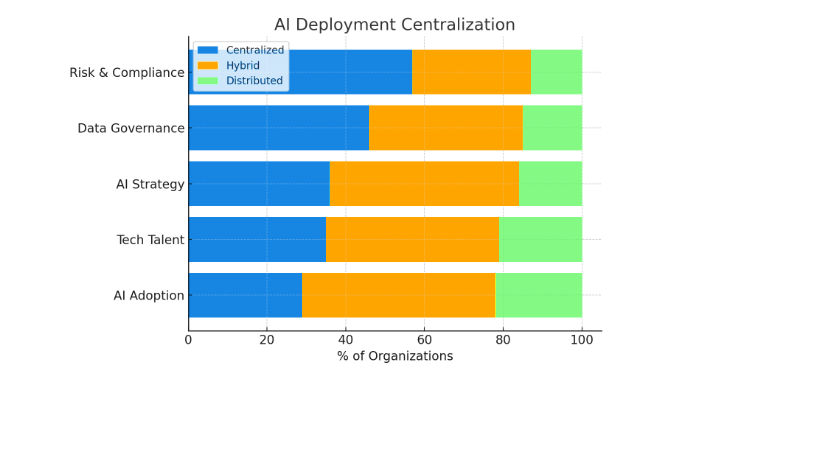As generative AI (gen AI) continues its rapid rise in enterprise applications, a striking trend is emerging organizations are no longer just experimenting with AI—they’re reorganizing themselves around it. According to McKinsey’s most recent global survey, companies are actively reshaping governance structures, redesigning workflows, and retraining their workforce in pursuit of tangible business impact. Yet, for most, the journey has only begun.
From Hype to Value: Redesigning for Impact
The data reveals that the companies reporting the highest impact from gen AI are those doing more than testing individual use cases—they are rewiring operations. In fact, redesigning workflows emerged as the single most impactful factor in driving EBIT (earnings before interest and taxes) improvement through gen AI. Already, 21% of organizations using gen AI report having fundamentally redesigned at least some workflows.
Leadership plays a critical role in this transformation. When CEOs or boards directly oversee AI governance, organizations report significantly higher value capture. Despite this, only 28% of organizations say their CEO currently owns this responsibility, suggesting room for leadership involvement to deepen.
Structure Matters: Centralization and Governance
AI deployment structures are also evolving. Functions like risk, compliance, and data governance are predominantly centralized, typically through a hub or center of excellence. In contrast, tech talent and solution adoption are often deployed using hybrid models, balancing centralized strategy with decentralized execution.
This structured centralization allows organizations to better mitigate key risks, especially inaccuracy, cybersecurity threats, and IP infringement, which have become more prevalent as gen AI scales. Larger organizations are leading the way in risk management, reflecting their greater resources and regulatory exposure.
Scaling Isn’t Optional—It’s Strategic
Organizations that scale successfully do so by applying 12 key practices identified by McKinsey, including:
- Setting clear roadmaps
- Embedding AI in business processes
- Establishing KPIs for value tracking
- Creating incentives and internal communication campaigns
Despite the known benefits, less than one-third of companies report using most of these practices. However, larger enterprises (over $500M in revenue) are nearly twice as likely to implement them, underlining the link between structure, scale, and success.
Talent, Reskilling, and the Shifting Workforce
As gen AI changes the nature of work, talent strategies are evolving. In the past year alone, many organizations have begun reskilling their employees. 38% of respondents expect no change in workforce size, but functions like service operations and supply chain are expected to shrink, while IT, product development, and software engineering may grow. Interestingly, C-level executives are leading by example—reporting the highest personal use of gen AI tools in their daily work.

Hiring AI talent remains a challenge, though it’s easing slightly. AI data scientists, compliance specialists, and machine learning engineers remain the most difficult roles to fill—yet they are critical for sustained AI maturity and risk governance.
Revenue and Cost Impact: Signs of Real ROI
The momentum is building. Compared to early 2024, significantly more organizations now report revenue increases in units deploying gen AI, particularly in:
- Product and service development
- Marketing and sales
- Software engineering
Cost savings are also becoming more visible, especially in functions like HR, risk & compliance, and knowledge management, where Generative AI automates repetitive, document-heavy tasks.
Conclusion: Thinking Big, Acting Bold
McKinsey’s research sends a clear message: AI maturity is not just about technology adoption—it’s about transformation. The organizations that succeed are those that think big from the start, align their top leadership, invest in foundational capabilities, and scale intentionally. As generative AI shifts from novelty to necessity, the companies that are rewiring how they operate—at scale—will define the next era of competitive advantage.

0 Comments